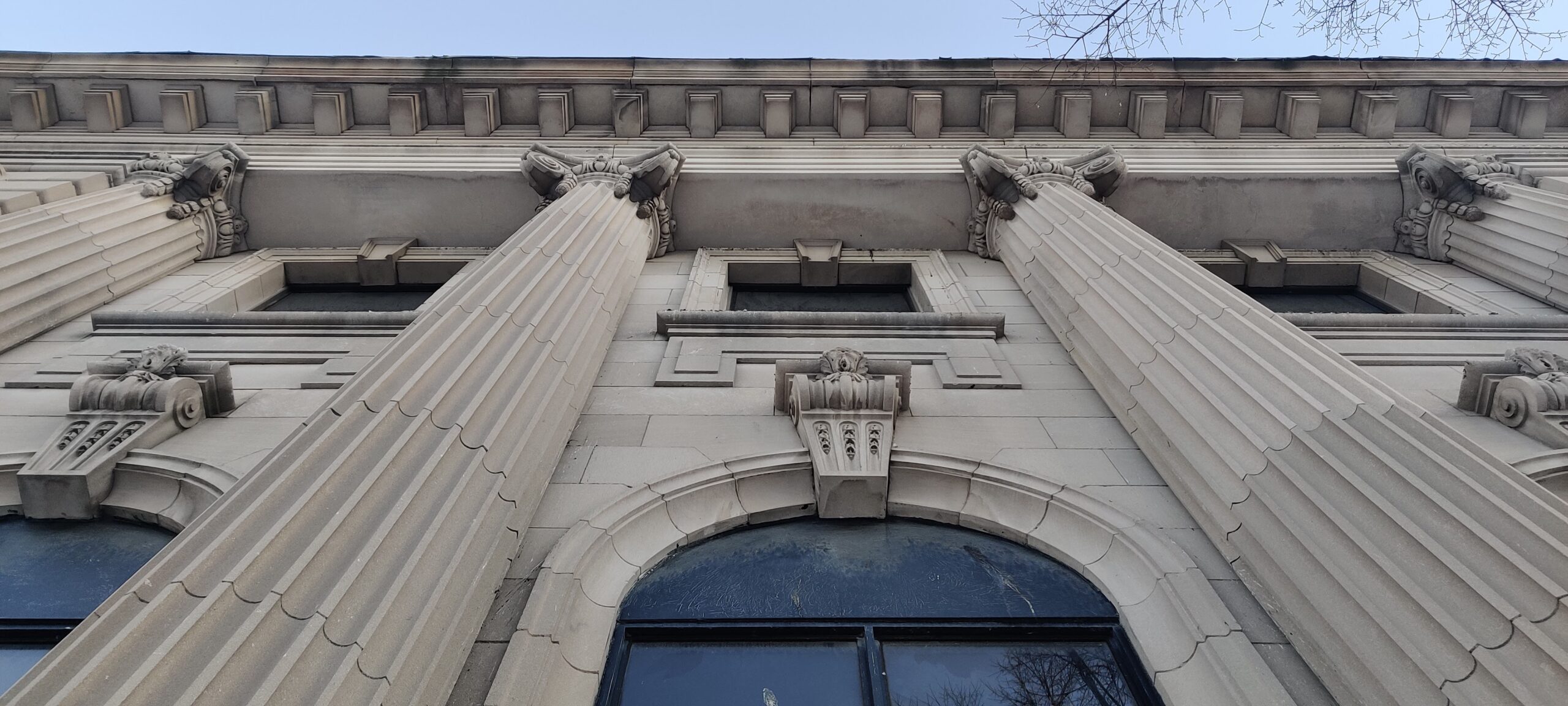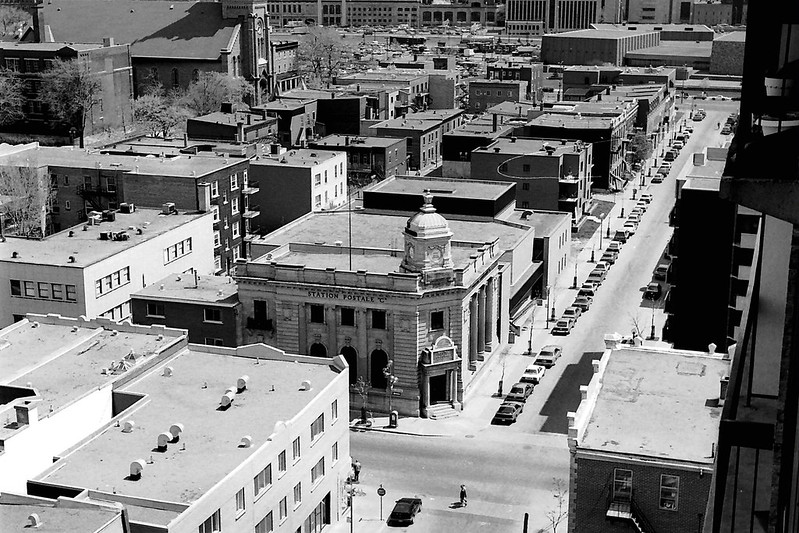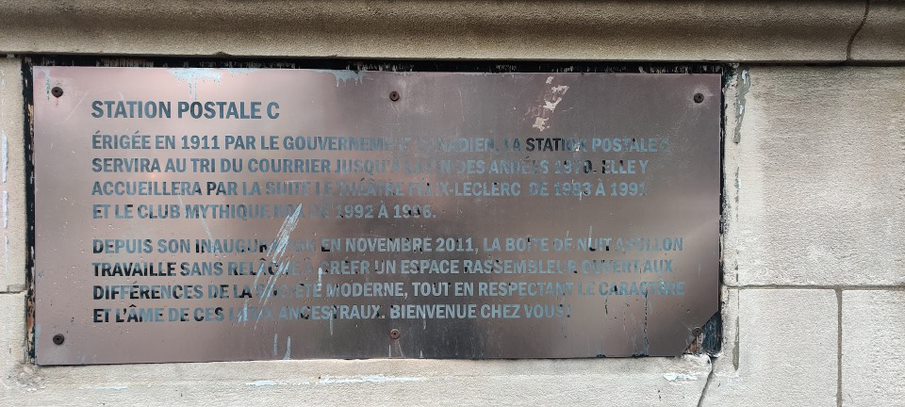Postal Station “C” was built in 1911-1912 on Sainte-Catherine Street East, at the intersection of Plessis Street.
The building was designed by architect Joseph Perrault. The latter had also designed the Hochelaga post office in collaboration with Simon Lesage.
The old post office is in the Beaux-Arts architectural style: the fluted columns, the bell tower (originally adorned with a clock), the richly ornamented cornice, as well as the stone used to construct the building. Also noteworthy is the symmetry of the facades on either side of the main entrance, which is located at an angle.
The post office was inaugurated in 1912 to meet the needs of the eastern part of the City of Montreal, particularly for the sorting and distribution of mail. It remained in operation until the late 1970s.
In 1980, a new theatrical institution was opened: the Comédie Nationale. A building on Plessis street was annexed to it and contained a vast theatre with more than 600 seats! The show Starmania had its Montreal premiere there. The Comédie Nationale’s adventure was short-lived: in 1982, debts forced the institution to close.
Several cultural groups, including the Théâtre d’Aujourd’hui, had their eye on the theatre. Finally, the Théâtre Félix-Leclerc, an institution dedicated to emerging artists, was chosen. Unfortunately, barely 3 years after its inauguration, the theater closed its doors, financial problems undermining its activities.
In 1991, major work was done: the performance hall disappeared, the rows of benches were demolished and the pit was leveled. These changes allowed the arrival of the gay bar K.O.X. (previously located on Montcalm Street). This change of vocation opens a new era for the building which will become, for the following decades, a high place of the night life for the LGBTQ+ community.
In the basement, there is an underground bar, the Katakombes. It is in this place that an important police raid took place in February 1994. These establishments closed in 1996.
In 2005, the Shiller & Lavy group acquired the building.
Until 2017, several bars and clubs followed, including the Club Apollon between 2011 and 2015.
In 2017, the last club closed its doors. In the summer, the rear part of the former Félix-Théâtre theater, on Plessis Street, was demolished to make way for a residential development.
Since then, the building has remained vacant. The lack of maintenance and occupancy is causing more and more damage. The original clock has disappeared (replaced by a themed crest with the name of the establishment over the years), leaving the campanile gaping.
In 2023, no new use is planned by either the owner or the borough.
Due to the urban planning by-law of the sector, it is not possible to obtain a new bar permit for this building, as it was located less than 25 meters from a similar establishment (article 270, for zone M.9C). Thus, unless a regulatory change is made or a specific project is submitted, other neighbouring establishments (notably the Sky and the District) prevent the development of such a use in the former postal station. Other occupancies are therefore to be developed: restaurant, offices, stores, etc









